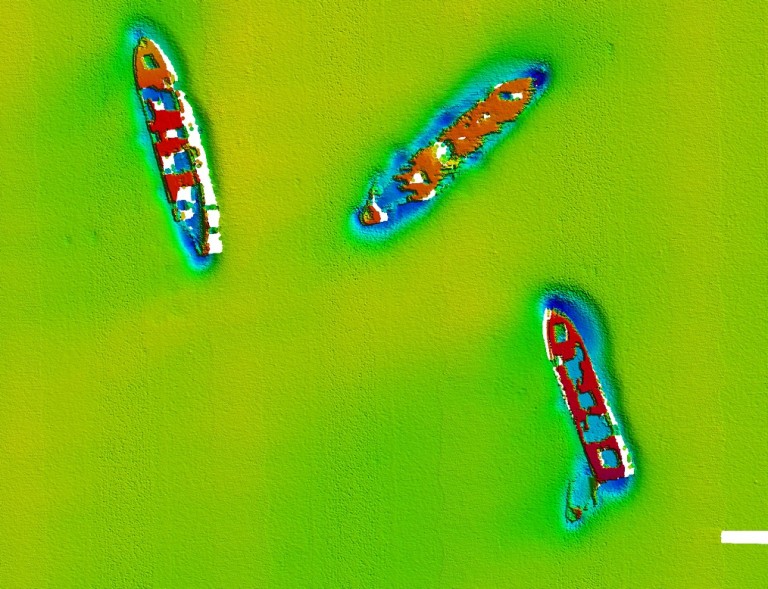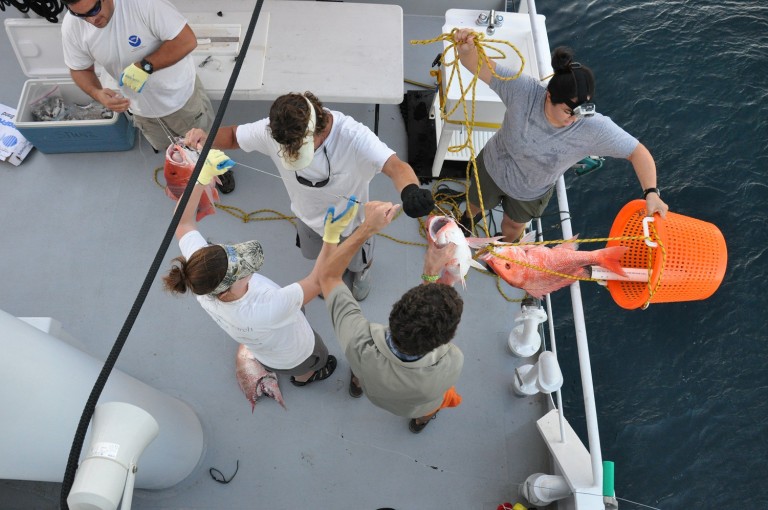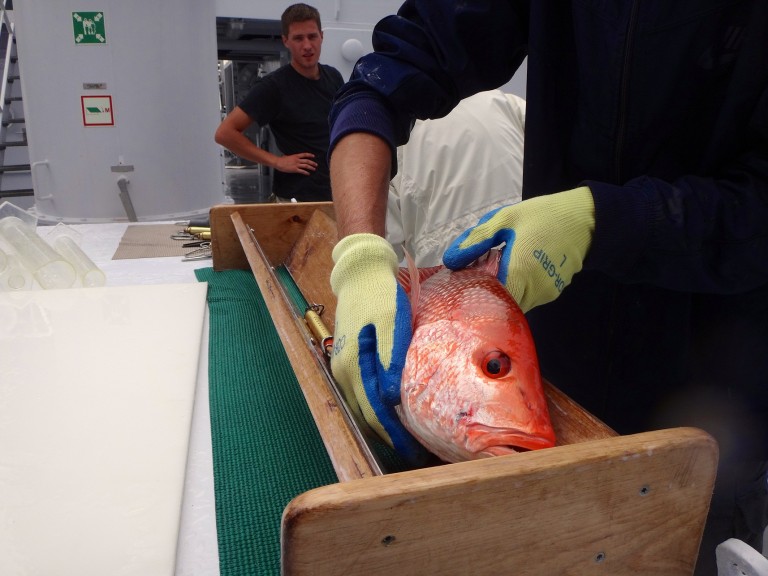The Gulf of Mexico has several “habitats of particular concern” (HAPC) for marine sea life. Essentially, HAPCs are those ecologically bountiful environments that are extremely sensistive to human impacts. Many of these HAPCs are represented by natural hard surfaces, or “reefs”, such as natural coral or algal banks. Fish will stay close to these hard surfaces as settlement territories for a number of expected reasons:
- Reproduction shelter
- A food source
- Protection from larger predators

The natural reefs that the fish inhabit have experienced some drastic external stresses in the recent past. For example, damage from net fishing trawlers and other human activities have reduced the actual area of natural hard surface habitats. In his scientific presentation today onboard the R/V Falkor, Dr. Matt Ajemian illustrated how most natural hard surfaces in the Gulf of Mexico are found in the eastern region, particularly off the Florida coast, with a paucity of hard structure in the western regions, including the Texas coast. In these areas devoid of natural hard bottom, man-made structures such as concrete culverts, sunken ships, or “rig to reefs” structures are a growing method to supply fish with artificial habitats.

Alabama’s Artificial Reef Program claims to have one of the best public artificial reef programs in the United States. Alabama has worked with the US Army Corps of Engineers to develop artificial reefs that now cover over 1260 square miles. Private individuals can cooperate to place some the man-made structures on the seafloor to help build artificial fish habitats. These structures help to support fish habitats and grow stronger fish populations.

While the Western Gulf of Mexico has a predominantly mud/silt bottom and lacks the natural hard bottom reef habitats, fish in this region have been making homes in existing production oil and gas platforms for decades. It is estimated that these existing platform habitats provide up to 2% in the Gulf of Mexico’s fish habitat, though many would argue this is extremely underestimated. As a result of the Idle Iron Policy, oil and gas platforms lasting longer than 5 years without service must be decomissioned. However, oil and gas companies have options to “topple or cut down the structure in place” or “submerge a portion of the structure nearby” to leave a potenially important habitat for sea life. Unfortunately, these habitats are decreasing as more platform structures are being removed than installed.
Video of fish sampling from R/V Falkor off the coast of South Texas. Video credit: Dr. Stacey D. Lyle at Texas A&M University-Corpus Christi
Drs. Greg Stunz and Matt Ajemian have been sampling fish at the existing artificial reefs off the Texas mid-coast to estimate the actual numbers and species of fish that inhabit these potentially crucial areas. To ensure that the fish count is accurate, these researchers have developed a standardized sampling method using both video and fishing gear. R/V Falkor multibeam echo sounders helps the scientists to locate the artificial reef structures very accurately. The ship’s crew then drives R/V Falkor with the research team aboard directly above the sample areas where they can use remotely operated vehicle (ROV) and vertical longline sample systems to collect fish samples at randomized locations within and around the artificial reefs. Biological data is then obtained from the collected fish samples and categorized for future research to determine migration and generational relationships. The team has already captured and returned a number of fish to their artificial reef homes and also collected video documentation of a hodge-podge of species inhabiting these areas.
The results from this research will make a big impact in the State of Texas as Drs. Stunz and Ajemian’s research will be used to assess the value of artificial reefs as they are potentially crucial for shelter, food, and spawning habitat for a host of fish species in the Gulf of Mexico.
-Written by Drs. Stacey D. Lyle and Matt Ajemian for Schmidt Ocean Institute
FK005c-2012
Coverage Around the Web:
Texas A&M University- Corpus Christi Expedition Blog

